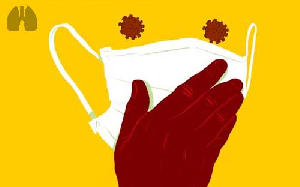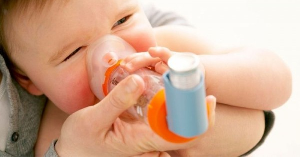
Cardiopulmonary response to exercise in adults born very preterm
Jacques Delfrate, Camille Girard-Bock, Daniel Curnier, Delphine Périé-Curnier, Anik Cloutier, Gabrielle Gascon, Jennifer S. Landry, Benoît Mâsse, Michael K. Stickland, Anne Monique Nuyt, Thuy Mai Luu, the HAPI Collaborating Group, , Motohiko Adomi, Nathalie Alos, Amy Al Simaani, Mariane Bertagnolli, Jean-Luc Bigras, Daniela Ravizzoni Dartora, Thierry Ducruet, Ramy El-Jalbout, Rafael Oliveira Fernandes, Adrien Flahault, Geneviève Gyger, Patrick Hamel, Mélanie Henderson, Jean-Claude Lavoie, Anne-Laure Lapeyraque, Muhammad Oneeb Rehman Mian, Valérie Orlando, Katryn Paquette, Li Feng Xie
European Respiratory Journal 2023 62: 2300503; DOI: 10.1183/13993003.00503-2023
Abstract
Background This study aims to compare cardiopulmonary response to aerobic exercise between young adults born very preterm, including a subgroup with bronchopulmonary dysplasia (BPD), and term controls.
Methods 71 adults (aged 18–29 years) born <30 weeks gestational age (24 with BPD) and 73 term controls were recruited. Assessment included cardiopulmonary exercise testing with impedance cardiography. We compared group differences in peak oxygen uptake (V′O2) and in ventilatory and cardiovascular responses to exercise using linear regression analyses.
Results Preterm participants had reduced peak V′O2 versus controls (mean difference (MD) −2.7 (95% CI −5.3– −0.1) mL per kg lean body mass per min). Those with BPD achieved lower peak work rate compared with term controls (MD −21 (95% CI −38– −5) W). There was no difference across groups in breathing reserve, ventilatory efficiency, peak heart rate and cardiac output. The V′O2 to work rate relationship (ΔV′O2/ΔWR) was reduced in preterm versus term. Peak systolic blood pressure and circulatory power (systolic blood pressure×V′O2) were also lower in BPD versus term controls. In the preterm group, longer neonatal intensive care unit stay and lower peak cardiac output were associated with lower peak V′O2.
Conclusions Results suggest limitations with peripheral oxygen uptake in the muscles with reduced ΔV′O2/ΔWR and peak circulatory power, but normal cardiac output. Investigations into skeletal muscle perfusion and oxygen use during exercise are warranted to better understand mechanisms of exercise limitation.
Young adults born very preterm, especially with bronchopulmonary dysplasia, have reduced aerobic exercise capacity https://bit.ly/466sEoB
Footnotes
-
HAPI Collaborating Group: Motohiko Adomi, Nathalie Alos, Amy Al Simaani, Mariane Bertagnolli, Jean-Luc Bigras, Daniela Ravizzoni Dartora, Thierry Ducruet, Ramy El-Jalbout, Rafael Oliveira Fernandes, Adrien Flahault, Geneviève Gyger, Patrick Hamel, Mélanie Henderson, Jean-Claude Lavoie, Anne-Laure Lapeyraque, Muhammad Oneeb Rehman Mian, Valérie Orlando, Katryn Paquette and Li Feng Xie.
-
Ethics approval: This cross-sectional observational study received approval from the Sainte-Justine Research Ethics Board (protocol 3901, 07-15-2014); written consents were obtained from all participants.
-
Author contributions: Conception and design: D. Curnier, J.S. Landry, B. Mâsse, A.M. Nuyt and T.M. Luu. Data collection and analysis: J. Delfrate, C. Girard-Bock, D. Curnier, D. Périé-Curnier, G. Gascon, B. Mâsse, A.M. Nuyt and T.M. Luu. Data interpretation: J. Delfrate, C. Girard-Bock, D. Curnier, J.S. Landry, M.K. Stickland, A.M. Nuyt and T.M. Luu. Manuscript drafting: J. Delfrate, C. Girard-Bock and T.M. Luu. Manuscript revision and final approval: J. Delfrate, C. Girard-Bock, D. Curnier, D. Périé-Curnier, G. Gascon, J.S. Landry, B. Mâsse, M.K. Stickland, A.M. Nuyt and T.M. Luu. Accountable for manuscript integrity: J. Delfrate, C. Girard-Bock, D. Curnier, D. Périé-Curnier, G. Gascon, J.S. Landry, B. Mâsse, M.K. Stickland, A.M. Nuyt and T.M. Luu.
-
This article has an editorial commentary: https://doi.org/10.1183/13993003.01787-2023
-
Conflict of interest: The authors declare no conflict of interest.
-
Support statement: This work was supported by the Canadian Institutes of Health Research (grant: 133572), Fonds de Recherche du Québec – Santé, CHU Sainte-Justine Foundation and Canada Foundation for Innovation. The funders had no role in the design of the study; in the collection, analyses or interpretation of data; in the writing of the manuscript, or in the decision to publish the results. Funding information for this article has been deposited with the Crossref Funder Registry.
- Received March 22, 2023.
- Accepted September 5, 2023.
- Copyright ©The authors 2023. For reproduction rights and permissions contact permissions@ersnet.org














